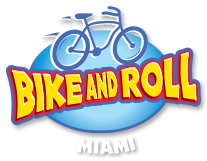 Miami Beach — known for its soft sands and sunny views, a barrier island at origin is one of the most desirable destinations of South Florida. As such, one can see the need for all the bridges from the mainland ! In total there are about 5 bridges which connect mainland Miami Dade County to Miami Beach and its neighboring towns (like North Miami Beach, Bal Harbor, Surfside…).
Miami Beach — known for its soft sands and sunny views, a barrier island at origin is one of the most desirable destinations of South Florida. As such, one can see the need for all the bridges from the mainland ! In total there are about 5 bridges which connect mainland Miami Dade County to Miami Beach and its neighboring towns (like North Miami Beach, Bal Harbor, Surfside…).
As a cyclist there are many wants to bike by the views and our favorite causeway for this is the Venetian Causeway! A little history on the Venetian Causeway which was originally built in 1913. Back then though, it was originally called Collins Bridge — for one of the founders John Collins. Creating this bridge raised the population of Miami Beach about 400% after it’s construction. The development was unprecedented and uniquely fast considering the times.
The islands which maintain the causeway – the Venetian Islands – are composed of six islands, all but one of which were man-made just to hold the causeway!
The causeway’s bicycle path is one of the best maintained in the area and although a cyclist these days cannot travel all the way across (due to construction) it still makes for a great ride – especially at dusk and dawn!
After biking it many a time, locals will agree that the beauty in the post-card above still stands true today.
Source for postcard: https://belleisleblog.wordpress.com/

 Miami Beach, a baby city of only 100 years of age (which we celebrated in quite a big way earlier this year!) is home to three different historical districts! The Art Deco Architectural District, of which we have all heard and which is probably the most famous. There’s also the SoFi district — that’s South of Fifth, and lastly and for the sake of this post, most importantly: the Espanola Way historical district.
Miami Beach, a baby city of only 100 years of age (which we celebrated in quite a big way earlier this year!) is home to three different historical districts! The Art Deco Architectural District, of which we have all heard and which is probably the most famous. There’s also the SoFi district — that’s South of Fifth, and lastly and for the sake of this post, most importantly: the Espanola Way historical district.